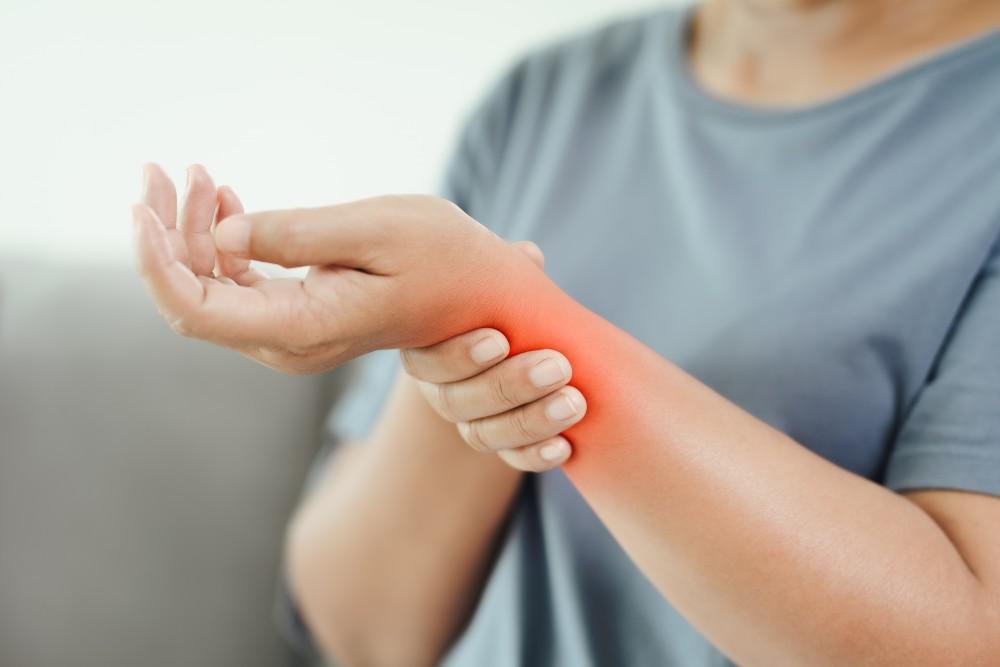Wrist pain
Your wrist plays a vital role in almost everything you do with your hand. It includes lifting objects, operating mobile phones, preparing food and many more. When you feel pain on the side of your wrist, just opposite your thumb, it may be ulnar wrist pain.
Your wrist is defined as a joint that connects your forearm to your hand and comprises numerous small bones that help you bend, rotate, and straighten out your hand and wrist. Many afflictions that can trigger pain, tingling, and/or numbness in your hands and wrists are treatable.
Get In Touch With Us
For FREE Online Consultation, please send us a message and we’ll get right back to you.

If you fall and notice wrist pain, results of an X-ray may indicate a sprain, fracture, or partial ligament disruption. However, there are times when you may experience mysterious wrist aches and pains. Pinpointing the exact cause of your wrist pain may be challenging, as symptoms of wrist pain may fluctuate, be persistent, or worsen throughout the day. Your healthcare provider will conduct a thorough exam and acquire appropriate imaging data. Your wrist pain could be due to:
- Carpal Tunnel Syndrome: A common hand problem that triggers pain, tingling, numbness, and weakness in your wrist and hand. Carpal tunnel syndrome occurs when the median nerve, which travels through your wrist and is responsible for the movement and feeling in your hand, is pressed upon due to pressure from extra weight or swelling from repetitive movements.
- Tendinitis: Many tendons within your wrist provide movement for your wrist and your fingers. If the tendons get irritated, swelling can happen, which can cause painful movement of your fingers and wrist, or a severe spontaneous rupture can happen. De Quervain’s tenosynovitis is a common kind of tendinitis that happens on the side of your wrist where your thumb is. Movement of your wrist and thumb will likely cause severe pain with de Quervain’s tenosynovitis.
- Ganglion Cysts: A benign, fluid-filled lump that forms on your tendons and joints in your wrist. A large enough cyst can constrict the nerves in your wrist, which can cause a dull ache, tingling, and numbness – although no real nerve damage is occurring
- Gout: A type of arthritis that inflames your joints, which causes swelling, pain, and tenderness. You may also notice that the joint affected feels warm to the touch. Gout happens when you have too much uric acid build-up in your bloodstream that triggers the formation of tiny, painful crystals in your soft tissue and joints.
- Osteoarthritis: This type of arthritis arises when the connective tissue, covering the ends of your bones (cartilage), wears down. When you have osteoarthritis, your bone literally rubs against bone, which causes swelling, stiffness, and pain.
- Psoriatic Arthritis: Psoriasis is a skin condition that creates thick and scaly patches on your skin and can lead to psoriatic arthritis. This type of arthritis triggers swelling, pain, and tenderness in your wrist and can result in a limited range of motion and stiffness.
- Rheumatoid Arthritis: Rheumatoid arthritis (RA) is an autoimmune disease that oftentimes begins in the small joints in your wrists and hands, and normally impacts both.
- Lupus: Systemic Lupus Erythematosus: An autoimmune disease that makes your own body attack healthy tissue within your body. Those with lupus are frequently diagnosed with arthritis in their hand and wrist.



